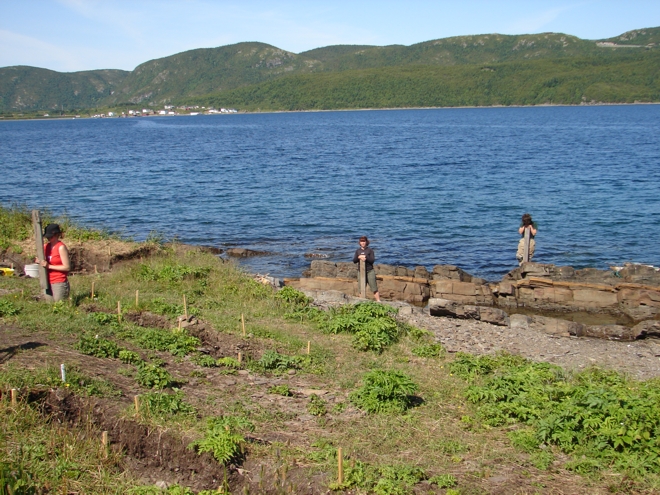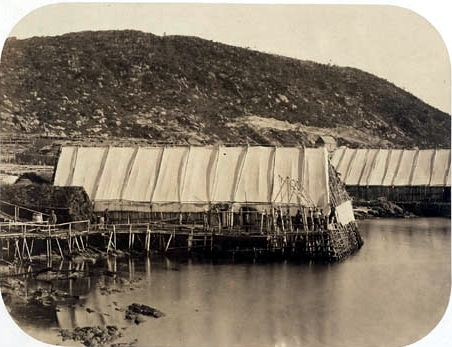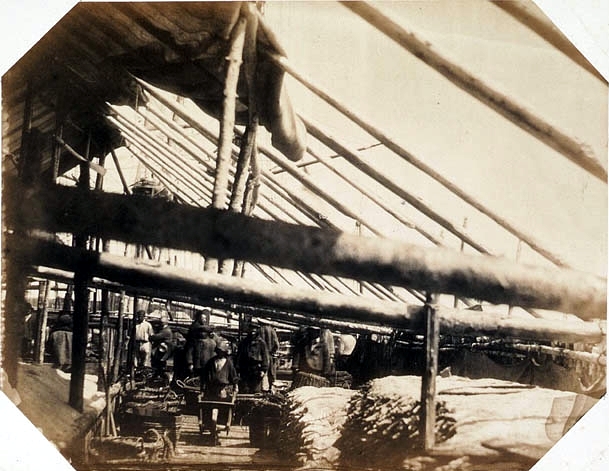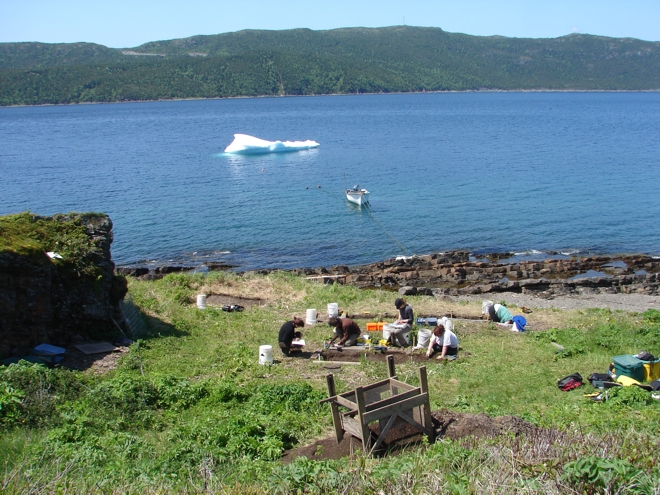Fishing stages
The stage was a rough timber platform at the water's edge, where crews landed, gutted and split fish. It was the economic centre of the fishing room.
The need for a sufficient depth of water to land a chaloupe laden with cod determined the location, orientation and dimensions of the stage. The timber framework had to extend offshore to depths of at least one fathom (almost 2m). Stages were often built onto rocky promontories, that could support the timber poles inserted into crevices and faults, sometimes crudely hewn, that acted like sockets. Where the coastal slope was more gradual, the stage would extend far into the water to reach a suitable depth. Crews preferred sheltered sites, avoiding exposure to the open sea, although wooden fenders were in use, to cushion the boats moored against the stage.
The end of the stage served as the wharf where the day's catch was unloaded. From here shore crews moved the fish through several stages of preparation. One man headed the fish, passing it to a second who gutted and split it, tossing the liver into a vat to be rendered into train oil. After a rinsing in the surf, the fish was carefully salted and stacked to accelerate dehydration. After a few days the crew laid it out to cure in the open air.
The French stage was broad and usually enclosed at its seaward end, using the ship's sails. Historical accounts record the harsh and pungent working conditions there. While crews brought nails for stage construction to the Petit Nord, they had to cut the considerable amount of timber required from the hills around the rooms. The annual need for timber forced crews working on relatively barren rooms, to seek wood elsewhere.


Cape Rouge Harbour in 2009. The positions on the rocky foreshore indicate the location of worn post scars in the
rock surface.
features cannot be dated and definitively tied to the French fishing room recorded at this site, they suggest the
type of features associated with stage areas of fishing rooms.
Archaeology
The remains of stages are traceable in the archaeological record as concentrations of artifacts and ecofacts at the shore's edge. In particular, wrought iron nails, a profusion of cod bones and sometimes fragments of wood eroding from the vegetation edge are good indicators. Excavations of the stage area at Champ Paya (EfAx-09), in Cape Rouge Harbour, have produced a broader range of artifacts including ceramics, pipe stems and lead cod dabbers - indicating the wide range of activities that took place there. Occasionally at some sites, alignments and arrays of timber post sockets are visible as scars and fractures in the foreshore rocks. A concentration of ballast boulders in the tidal zone sometimes indicates the position of the crib-work that supported the stage offshore.


Archives Canada, PA-202292.
Libraries and Archives Canada, PA-194630.

Cape Rouge Harbour, in 2009. Note that the crew have moored their boat exactly where French crews moored
theirs, in previous centuries.